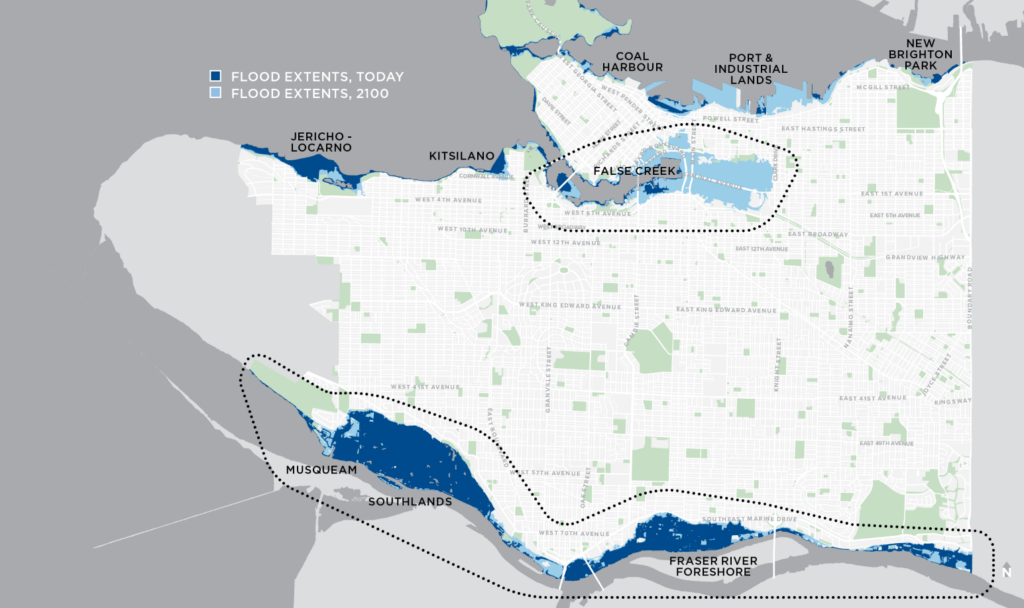City-wide bans on plastic. Annual restrictions on water use. Electrified roads. 3D-printed houses. Buildings that generate more energy than they consume. Parks in every neighbourhood. Worldwide, cities are designing bold climate action plans to propel us into a future of zero carbon emissions, zero waste, clean air and water, rows of green buildings, and thickets of trees.
These plans — whether it's Vancouver’s Climate Emergency Action Plan or its Climate Change Adaptation Strategy — sometimes take years to create and even longer to be fulfilled.
And with good reason! As Dave Aharonian, a Senior Policy Analyst in the Climate Partnerships and Engagement Branch at the B.C. Climate Action Secretariat, says, all aspects of our lives are affected by climate change. “It's not just the natural environment. It's our economy, it's our infrastructure, it's everything.”
If you were tasked with creating a climate action plan for a city, you’d have a lot to consider.
According to Dave, the first thing you’d need to do is conduct a climate risk assessment to understand the kinds of threat your city is facing.
Nancy Olewiler, a professor at Simon Fraser University and co-chair of the BC Climate Solutions Council, agrees, saying, “knowing where risks are going to be leads to better decision-making.”
She mentions that the City of Victoria has a hazard site that educates its residents on the types of hazards the city may face, like tsunamis and floods, where they may occur, and how to prepare.
False Creek
See more →
This area is the False Creek floodplain. Dark blue shows flood events we experience today and light blue shows anticipated flooding in 2100 with one metre of sea level rise.
Located in the light blue area is BC Place, Pacific Central Station, Olympic Village, Science World, and the future St. Paul's Hospital site.
Due to sea level rise, the future St. Paul's Hospital is currently being built to "a 2050 standard and a 2100 standard." This includes placing mechanical equipment above ground level, ensuring optimal drainage, and using flood-resistant building materials.
Port of Vancouver
See more →
Areas shaded in light blue include the Port of Vancouver (Canada's largest port), Canada Place, Waterfront Station, and parts of Gastown.
The City of Vancouver notes that many museums, cultural destinations, and historic sites in Gastown and Chinatown are at risk.
River District
See more →
Vancouver's River District is a growing, 130-acre community along the Fraser River. This area is currently susceptible to flooding today, and more severe flooding in 2100.
Potential flooding scenarios range from water in basements and underground parking areas to water reaching first floor and roof levels, causing residential evacuation.
Marine Drive
See more →
According to the City of Vancouver, flooding in the Marine Drive area is caused by rising ocean levels. By 2100, flooding in this area would reach the ground floor level in homes and cause resident evacuation.
xʷməθkʷəy̓əm (Musqueam) First Nation and Southlands
See more →
Flooding in this area would affect residences, parks, and golf courses. Before colonization, this area was home to the Musqueam people's main winter village for over 3,500 years. "The perfect storm" of rising sea levels and increasing winter storms is worrying for the Musqueam First Nation.
Jericho and Locarno Beach
See more →
As the ocean creeps up due to sea level rise, the beach area exposed during low tides will shrink. This is called a "coastal squeeze" and will result in habitat loss for birds, forage fish, mussels, and clams in Vancouver’s shoreline ecosystem.
Kitsilano and Granville Island
See more →
Granville Island is considered one of the most flood-vulnerable areas in False Creek. It houses over 300 businesses and its arts, culture, and culinary scene make it one of Vancouver's most popular destinations.
Flooding in this area would also affect Kitsilano Beach, Vanier Park, and homes within Kits Point.
When you know what the risks are, you can prepare your city for climate-related disasters before they happen, and you can also create relevant plans.
While Vancouver’s Climate Change Adaptation Strategy addresses risks like sea level rise and extreme weather events, the Climate Emergency Action Plan focuses on mitigation strategies, like reducing emissions, Rachel Telling, Acting Manager of Climate Adaptation & Equity at the City of Vancouver says.
Knowing what the risks are and what plans to create makes it easier to empower smaller organizations to meet people’s needs (like Vancouver does through the Resilient Neighbourhoods Program), engage your community in decision-making, and create protections for vulnerable populations.
During the 2021 heat dome, cooling centres Cooling centresFacilities established by local authorities and First Nations in response to heat warnings in BC, equipped with amenities like air conditioning and water. The initiative is part of the BC Heat Alert and Response System with the goal of mitigating heat-related illnesses and deaths and ensure the well-being of everyone.Learn More were designated in libraries and other public spaces around Vancouver. But the City soon realized that some of its more vulnerable residents, like seniors, disabled people, and the immunocompromised, experienced difficulty when trying to access these centres.
Rachel says the City is looking into retrofitting facilities that have cooling centres to make them more accessible, as well as launching a taxi pilot program that will ferry people to and from cooling centres for free.
Further protections will also come from a provincial initiative that provides free, portable air conditioners to low-income, heat-vulnerable populations and a change to BC’s Building Code that will require new homes to have at least one temperature-controlled room.
In the end, the goal, Rachel and Dave note, should be to enhance resilience in people and in the environment because as we continue to feel the effects of climate change, resilience — which Rachel describes as “the ability to recover from the effects of a hazard” — is needed more than ever before.
Curious for more science behind climate resilience and adaptation?
Explore solutions for regenerating our planet on Change Reaction.

